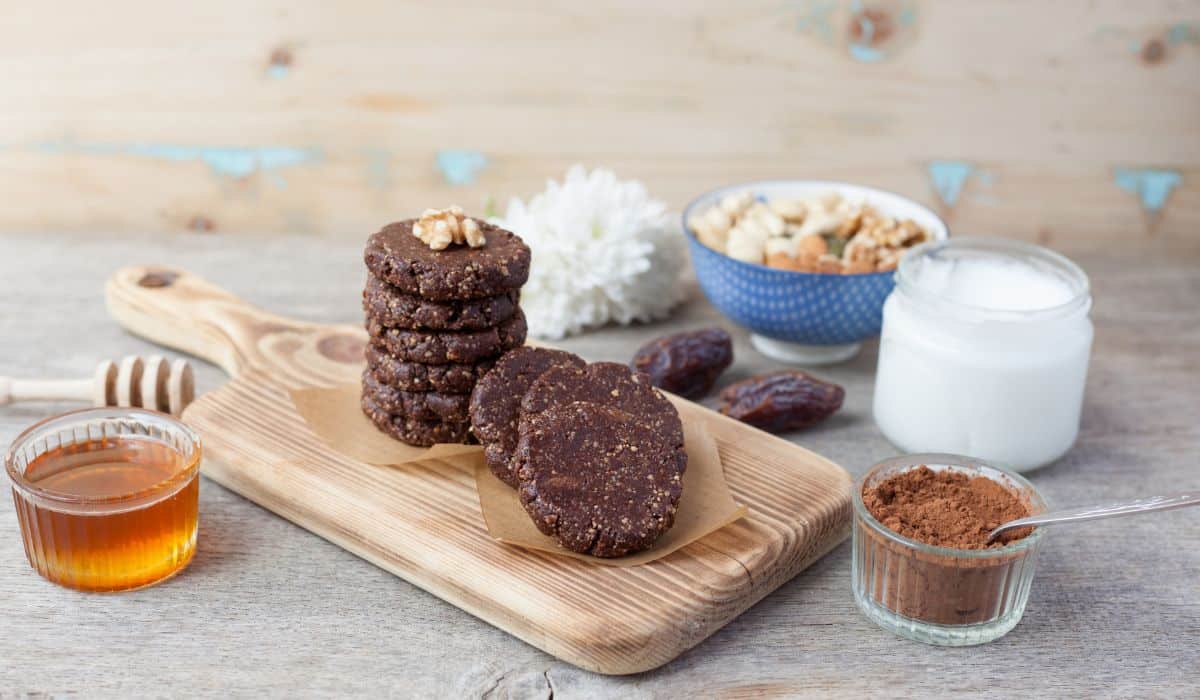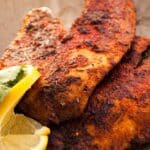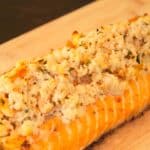
Even Paleo eaters can learn a thing or two from the low-fat craze. In this case, it’s a lesson about foods in the grocery store that are labeled “Paleo-friendly” or “gluten-free.” There’s been an explosion of Paleo-branded foods lately: some are great, but others are total duds. Here’s how to tell the good from the bad.
Learning From Low-Fat Mania
The peak of the low-fat craze has passed, but even today, you can still walk into any grocery store and buy low-fat cookies, low-fat salad dressing, low-fat “cooking spray,” and low-fat dairy products of every kind, from yogurt to cheese to coffee creamer. People have obviously been buying this stuff: if it didn’t sell, it would be off the shelves.
But despite our apparently popular low-fat options, people in the US have kept right on gaining weight - because in most of these products, fat is just replaced with sugar. Swapping fat with sugar doesn’t magically make cookies into health food. Some low-fat foods are perfectly healthy (spinach, vinegar, and spices are all naturally low in fat!). But just taking the fat out of a food doesn’t make it good for you. Or, put more bluntly, low-fat junk is still junk..
To put that in a more general form:
Food companies can engineer junk food to technically follow any set of diet rules (low-fat, low-carb, gluten-free, Paleo, etc.) - that doesn’t make it good for you.
That concept is a good starting point for thinking about the increasing number of Paleo-branded foods that have been popping up at grocery stores lately. Even foods that technically fall within Paleo guidelines can still be really high in sugar, or just not quite right for you personally. Don’t fall into the trap of just seeing the “Paleo approved” sticker and assuming it must be healthy: here’s what to do instead.
The Rise of Paleo-Branded Foods
As Paleo has been getting more and more popular lately, “Paleo-friendly” or “Paleo approved” products from bacon to granola to cookie dough have started appearing in the grocery aisles. On one level, that’s great: more choices and convenience for you, the shopper!
But on the other hand, there are some real stinkers out there. Some foods are branded as “Paleo” when they really shouldn’t be. And there’s a whole other group of products that follow all the Paleo rules but just don’t work for everyone. Just because it’s technically Paleo doesn’t mean it’s right for you!
In that spirit, here’s a guide to evaluating those products to find the ones that work for you. This isn’t a list of which meals or products are “good” or “bad.” There are way too many products out there to fit in one list, and more coming out every day. But hopefully, after reading this, it should be easy to look at whatever you have available and make an informed decision about eating it.
"Paleo” doesn’t mean “healthy” or “right for you.”
There’s no regulation for how companies are allowed to use the term “Paleo.” It’s not like “USDA organic,” where there are specific rules (and regular inspections to make sure they’re followed). It’s up to you to figure out whether “Paleo”-branded products are (a) actually Paleo, or (b) right for you personally.
Step 1: Read the ingredients.
OK, sure, they're not very exciting. But if everyone in the world took 30 seconds to skim an ingredients list instead of making assumptions based on packaging or branding, we’d all collectively save ourselves a lot of unnecessary weight gain and health problems.
What you see on that list can tell you a lot about whether the food is Paleo at all, and if so, whether it’s right for you. “Paleo” on the whole has a lot of gray areas and debated foods (white potatoes, dairy, bean sprouts…), but you personally should have a decent idea of what does or doesn’t work for you. Check the ingredients to make sure everything is OK: watch out for…
- Sweeteners. Some people do best without any kind of sugar in their diet, whether it’s sugar from honey, maple syrup, or table sugar (all of which are basically the same, metabolically speaking). Other people are happy to eat honey and maple syrup, but not sugar alcohols. Then there's another group of people who will only eat Stevia and nothing else. You know which camp you’re in: does the type of sugar or sweetener in the product fall into your personal limits?
- Nut flours. They can be gut-irritating and inflammatory in big doses, and some people do better without them.
- Additives and preservatives. Everyone has a different case for which preservatives they will or won’t accept - check the list and see how it stacks up against your personal preference
Step 2: Read the Nutrition Facts.

The ingredients list tells you what is in a product, but not how much. In some cases, the “how much” matters.
For example, maybe honey is on the ingredients list. Honey is high in carbs. If you care about restricting carbs, then a tiny amount of honey per serving would be fine because it barely adds to the carb count. So if the Nutrition Facts says “5 grams of carbs per serving,” you’re good to go, even with a high-carb food like honey on the list. But on the other hand, if there are 100 grams of carbs per serving, that might be too much honey for you.
Step 3: Decide how the food will fit into your diet.
Based on your reading of the ingredients and the Nutrition Facts, is this an all-the-time food, a special treat, or something to put back on the shelf immediately and forget about forever?
This isn’t about purity judgement and being More Paleo Than Thou. We’re all humans, and sometimes humans eat for pleasure. That’s totally normal and fine. There’s a time and a place for “less-bad” versions of candy and pizza - so long as you know that’s what you’re eating. Maybe a particular food clears your bar for “less-bad replacement” but doesn’t make the cut for “regular diet staple.”
The Price Tag: Reducing the Paleo-Label Premium
Not always, but often, the “Paleo” label comes with a premium price tag. You can sometimes save money by asking “why am I paying a premium for the Paleo version of this product, and is there a non-Paleo-branded version that would be equally good?”
For example, with Paleo cookies, the cookies could be Paleo because they use almond flour (or similar) instead of wheat flour. You can’t just get that from a regular old package of Chips Ahoy. But with Paleo-branded bacon or sausages, you might find “accidentally Paleo” versions of the food without the markup. After all, it’s not the “Paleo” sticker on the front you care about; it’s the food inside.
Paleo-Branded Foods: Are they Right for You?
To repeat from above:
Food companies can engineer junk food to technically follow any set of diet rules (low-fat, low-carb, gluten-free, Paleo, etc.) - that doesn’t make it good for you.
When you spot some new product with a “Paleo approved” sticker, it might be a really awesome find, but it might also not be. Read the ingredients, read the nutrition facts, and then decide whether the food is right for you and how it’s going to fit into your diet.





Leave a Reply